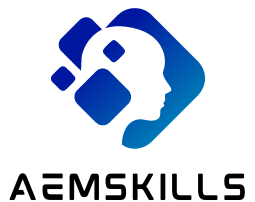Introduction
In today’s fast-paced software development landscape, businesses strive for speed, efficiency, and continuous improvement. Two methodologies that dominate this space are Agile and DevOps. While Agile focuses on iterative development and customer feedback, DevOps emphasizes collaboration, automation, and continuous delivery.
But how do Agile and DevOps interrelate? Are they competing methodologies, or do they complement each other? This article explores their relationship, benefits, and how they work together to enhance software delivery.
Understanding Agile and DevOps
What is Agile?
Agile is a software development methodology that promotes iterative development, collaboration, and customer feedback. It breaks projects into small increments called sprints, allowing teams to adapt quickly to changes.
Key Principles of Agile:
-
Customer satisfaction through early and continuous delivery.
-
Welcome changing requirements, even late in development.
-
Deliver working software frequently.
-
Collaboration between business stakeholders and developers.
-
Sustainable development pace.
What is DevOps?
DevOps is a culture and set of practices that bridge the gap between development (Dev) and operations (Ops). It focuses on automation, continuous integration (CI), continuous delivery (CD), and infrastructure as code (IaC) to accelerate software releases.
Key Principles of DevOps:
-
Collaboration between development and operations teams.
-
Automation of build, test, and deployment processes.
-
Continuous monitoring and feedback.
-
Faster and more reliable software releases.
-
Infrastructure as Code (IaC) for scalability.
How Agile and DevOps Interrelate
While Agile and DevOps have different focuses, they complement each other to enhance software delivery. Here’s how they interrelate:
| Aspect | Agile | DevOps | Combined Impact |
|---|---|---|---|
| Goal | Faster software iterations | Faster software releases | Accelerated end-to-end delivery |
| Focus | Development & customer feedback | Operations & automation | Continuous delivery & deployment |
| Team Structure | Cross-functional teams | Dev + Ops collaboration | Unified teams for efficiency |
| Delivery Speed | Short sprints (2-4 weeks) | CI/CD pipelines (daily/hourly releases) | Rapid, reliable deployments |
| Feedback Loop | Customer feedback at sprint reviews | Automated monitoring & logs | Real-time improvements |
| Automation | Limited to development | Full CI/CD automation | End-to-end automation |
1. Agile Prepares the Ground for DevOps
Agile’s iterative approach ensures that software is developed in small, manageable chunks. DevOps takes this further by automating the deployment and monitoring processes, ensuring seamless transitions from development to production.
2. DevOps Enhances Agile Delivery
Agile focuses on “developing fast,” while DevOps ensures “releasing fast and reliably.” By integrating DevOps practices like CI/CD pipelines, Agile teams can deploy updates more frequently without compromising stability.
3. Shared Culture of Collaboration
Both Agile and DevOps emphasize breaking silos. Agile encourages collaboration between developers, testers, and business stakeholders, while DevOps extends this to operations teams, ensuring smooth deployments.
4. Continuous Feedback Loops
-
Agile gathers feedback from customers at the end of each sprint.
-
DevOps provides real-time feedback through automated monitoring and logs.
Together, they create a closed-loop system for continuous improvement.
5. Automation Bridges the Gap
Agile teams write code in sprints, but manual deployments can slow them down. DevOps introduces automated testing, deployment, and infrastructure management, reducing bottlenecks.
Benefits of Combining Agile and DevOps
| Benefit | Explanation |
|---|---|
| Faster Time-to-Market | Agile speeds up development, DevOps speeds up deployment. |
| Higher Quality Software | Continuous testing & monitoring reduce bugs. |
| Improved Collaboration | Breaks silos between Dev, QA, and Ops. |
| Greater Flexibility | Agile adapts to changes, DevOps ensures smooth deployments. |
| Enhanced Customer Satisfaction | Faster releases + real-time feedback = happier users. |
FAQs on Agile and DevOps Relationship
1. Can Agile Exist Without DevOps?
Yes, Agile can exist without DevOps, but manual deployments may slow down releases. DevOps enhances Agile by automating workflows.
2. Is DevOps a Replacement for Agile?
No, DevOps complements Agile by extending its principles to operations.
3. How Does CI/CD Fit into Agile and DevOps?
-
Agile focuses on continuous development.
-
DevOps introduces CI/CD for continuous integration and delivery.
4. Do All Agile Teams Need DevOps?
Not mandatory, but DevOps improves efficiency for Agile teams aiming for frequent releases.
5. What’s the Role of Automation in Agile & DevOps?
-
Agile: Manual testing & deployments.
-
DevOps: Automated CI/CD pipelines for faster releases.
Conclusion
Agile and DevOps are not competing methodologies but powerful allies in modern software development. Agile ensures rapid, customer-focused development, while DevOps enables seamless, automated deployments.
By integrating Agile’s flexibility with DevOps’ automation, organizations achieve faster releases, higher quality software, and improved collaboration.
Key Takeaways:
✔ Agile focuses on iterative development; DevOps focuses on automation & deployment.
✔ Together, they enable continuous delivery and faster time-to-market.
✔ DevOps extends Agile principles to operations, breaking silos.
✔ Automation (CI/CD) bridges the gap between Agile and DevOps.

Cybersecurity Architect | Cloud-Native Defense | AI/ML Security | DevSecOps
With over 23 years of experience in cybersecurity, I specialize in building resilient, zero-trust digital ecosystems across multi-cloud (AWS, Azure, GCP) and Kubernetes (EKS, AKS, GKE) environments. My journey began in network security—firewalls, IDS/IPS—and expanded into Linux/Windows hardening, IAM, and DevSecOps automation using Terraform, GitLab CI/CD, and policy-as-code tools like OPA and Checkov.
Today, my focus is on securing AI/ML adoption through MLSecOps, protecting models from adversarial attacks with tools like Robust Intelligence and Microsoft Counterfit. I integrate AISecOps for threat detection (Darktrace, Microsoft Security Copilot) and automate incident response with forensics-driven workflows (Elastic SIEM, TheHive).
Whether it’s hardening cloud-native stacks, embedding security into CI/CD pipelines, or safeguarding AI systems, I bridge the gap between security and innovation—ensuring defense scales with speed.
Let’s connect and discuss the future of secure, intelligent infrastructure.
